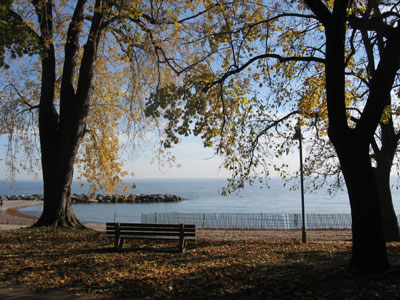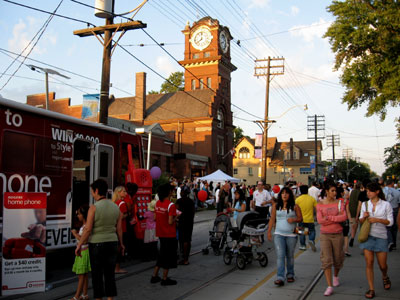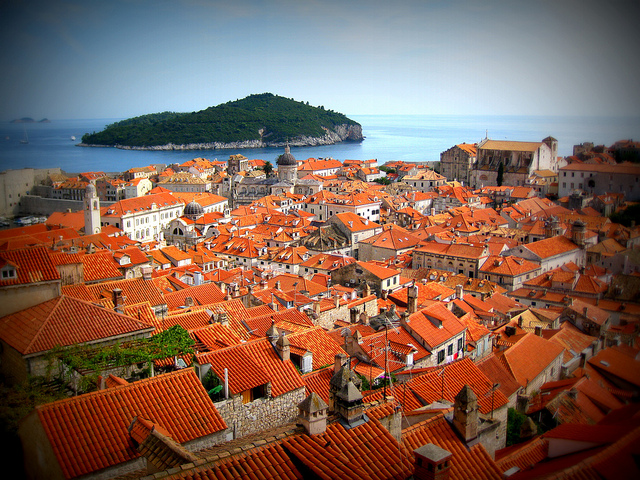A well-used bandstand anchors the park and Gene pointed out a dedication to a lifelong resident of East Toronto, Alex Christie (1917 – 1992) whose actions improving the community received permanent appreciation in the plaque adorning the bandstand.
A few steps eastwards is the Dr. William D. Young Memorial, a Renaissance style drinking fountain which was erected in 1920 to commemorate a local doctor who had dedicated himself to public service, and in particular, to the wellbeing of children in the area. Gene pointed out that when Dr. Young passed away in 1919, he was almost penniless.

“Service was his aim”: Dr. William D. Young
We strolled south on Lee Avenue, the main north-south artery in the Beach, and Gene pointed out a former hotel with 13 rooms, today a private residence. For well over a hundred years, the Beach has been a popular recreation area, and from the late 1800s onwards, people used to come from downtown Toronto in steamers to enjoy the serenity and outdoor opportunities offered by the Beach.

A former 31 room hotel, now a beautiful residence
By the late 1800s the Williams family had subdivided their plot and built an entire subdivision of homes in parts of today’s Kew Gardens. Joseph and Jane Williams’ son, Kew Williams, had built a house adjoining Lee Avenue for his own family. According to Gene, the grey stone was brought in by barge from Kingston, Ontario. To the Williams family’s dismay, the City of Toronto expropriated their property in 1907 to create a large park.

The Kew Williams House, also known as the “Gardener’s Cottage”
All of the residences built in the park were demolished with the exception of the Kew Williams House, which today is also referred to as the Gardener’s cottage, the only residential building west of Lee Avenue still standing in Kew Gardens. Gene mentioned that one of Kew Williams’ daughters never set foot inside of the house until about 12 years ago, in memory of the traumatic experience that her family had gone through.
From the foot of Lee Avenue we went southwards where Gene pointed out that years ago, the waterfront at the beach was composed of a sandy barrier island with a stretch of water flowing just inland. This inland river was later filled in. More than 100 years ago, the waterfront would have been full of cottages and houses. Today this area is a large public park with a wide sandy beach. Gene’s extensive history knowledge (he has written more than 300 articles for the local Beach Metro Community News) touched on the Kew Beach Club which existed here from 1903 and was demolished around 1930. The activities at the club included bowling, tennis and water sports. Numerous photos of the era show hundreds of canoes in the water and thousands of people partaking of various water sports. Three major amusement parks also adorned the Beaches at different times, all of which were demolished long ago. Landowners more than 120 years ago recognized the potential of this waterfront area for entertainment.

Gene with a historic photo of the action along the boardwalk




